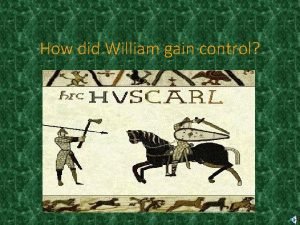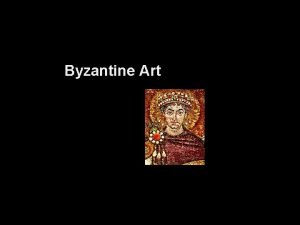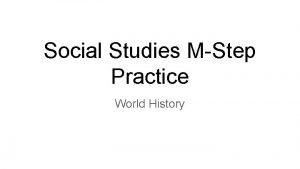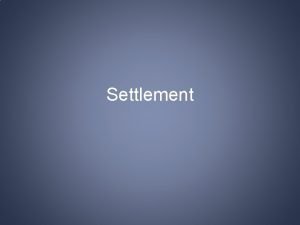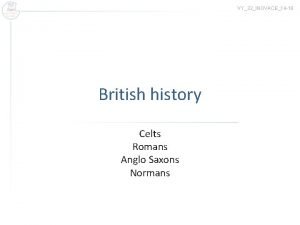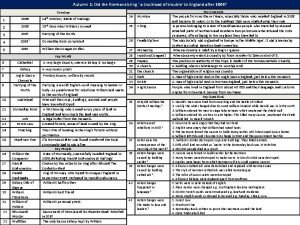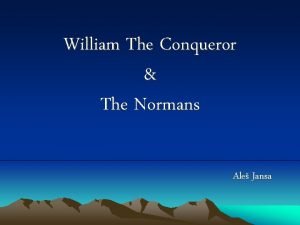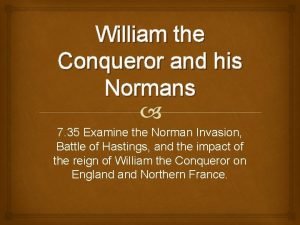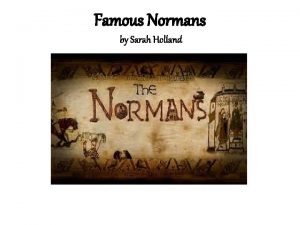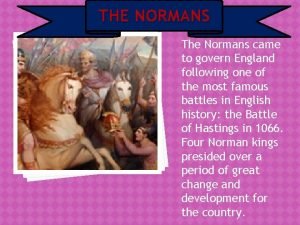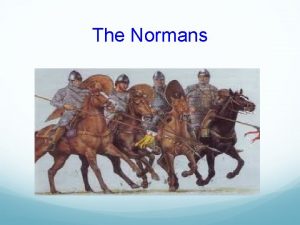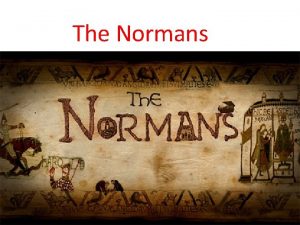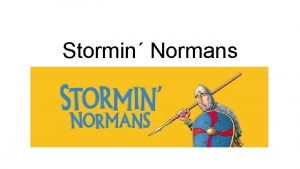William The Conqueror The Normans Ale Jansa Early














- Slides: 14

William The Conqueror & The Normans Aleš Jansa

Early life born in 1028 at Falaise Castle son of Robert The Magnificent and Herleve, daughter of a tanner William The Bastard cousin of the British king Edward at the age of 7 – Duke of Normandy Falaise Castle

Duke of Normandy being a bastard child, William wasn‘t favoured by local barons this led to anarchy in 1047 he began to restore order in Normandy in Alencon he had cut off citizens‘ hands and legs as a revenge for the rebellion 1049 got married to Matilda Statue of William at Falaise

William‘s appearance tall (5’ 10‘‘) and thick dark curly hair bold on the forehead very strong later he had problems with overweight rasping voice William‘s portrait

The Conquest of England 1051 William visited his cousin Edward, who had purpotedly promised him the throne January 1066 – Edward The Confessor died Harold was accepted as the king William was preparing to invade Britain Sept. 1066 – invasion of Harold Hardrada, Viking of Norway Sept. 25, 1066 - battle at Stamford Bridge Vikings were defeated

The Battle of Hastings Sept. 27, 1066 – Norman fleet landed William started to build castles in Hastings and Pevensey, where his army landed king Harold heard about it 4 days later and immediately marched with his exhausted army 255 miles south to reach Hastings William‘s fleet

The Battle of Hastings Oct. 13, 1066 – English army arrived to Battle Oct. 14, 1066 AM – Normans attacked both armies counted obout 7. 000 men Normans were in worse position - in valley in the beginning Harold was more successful but than perfect tactics of William decided The Battle

From the battle to the throne William marched to London his army devastated land, burned towns in some time William subjugated large part of Britain and many towns (Dover, Winchester) some rebellions occured (Sheriff Edgar) but were politically suppressed William was crowned on the Christmas day in Westminster Abbey King William I.

The reign of William I. reign of the terror many rebellions – crushed and punished confiscated lands granted to Normans over 80 castles were built to enforce his rule Tower of London

William‘s reforms changes of many laws murder became a crime slavery was abolished new feudal system (French) Norman French language of upper class cow / beef swine / gammon Arms of The House of Normandy

The Domesday Book 1085 - a survey of the amount and value of land livestock held by landholders in England easier taxation written in Latin The Domesday Book

The death of William I. last year of his life spent fighting in Normandy 1087 – he was thrown from his horse he obtained severe abdominal injuries he is burried in Caen because William was very fat, when the attendants tried to force the body into the stone sarcophagus, it burst, filling the church with a foul smell William‘s grave

Sources www. wikipedia. org www. royal. gov. uk www. faculty. de. gcsu. edu www. historyhouse. com www. englishmonarchs. co. uk www. findagrave. com all the pages were accessed on Oct. 10, 2006

Thank you for your attention!
 William the conqueror leadership qualities
William the conqueror leadership qualities How did william gain control of england
How did william gain control of england Why did william win the battle of hastings
Why did william win the battle of hastings Conqueror of central asia
Conqueror of central asia The conqueror worm
The conqueror worm Harbaville triptych
Harbaville triptych Berlin wall
Berlin wall Where did the normans settle in ireland
Where did the normans settle in ireland Celts romans anglo saxons vikings normans
Celts romans anglo saxons vikings normans 7 stages of donald norman's model
7 stages of donald norman's model What changes did the normans bring to ireland
What changes did the normans bring to ireland Normans designprincipper
Normans designprincipper Did the normans bring a truckload of trouble
Did the normans bring a truckload of trouble Where did the normans come from
Where did the normans come from Early cpr and early defibrillation can: *
Early cpr and early defibrillation can: *

